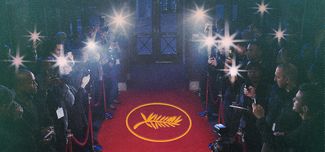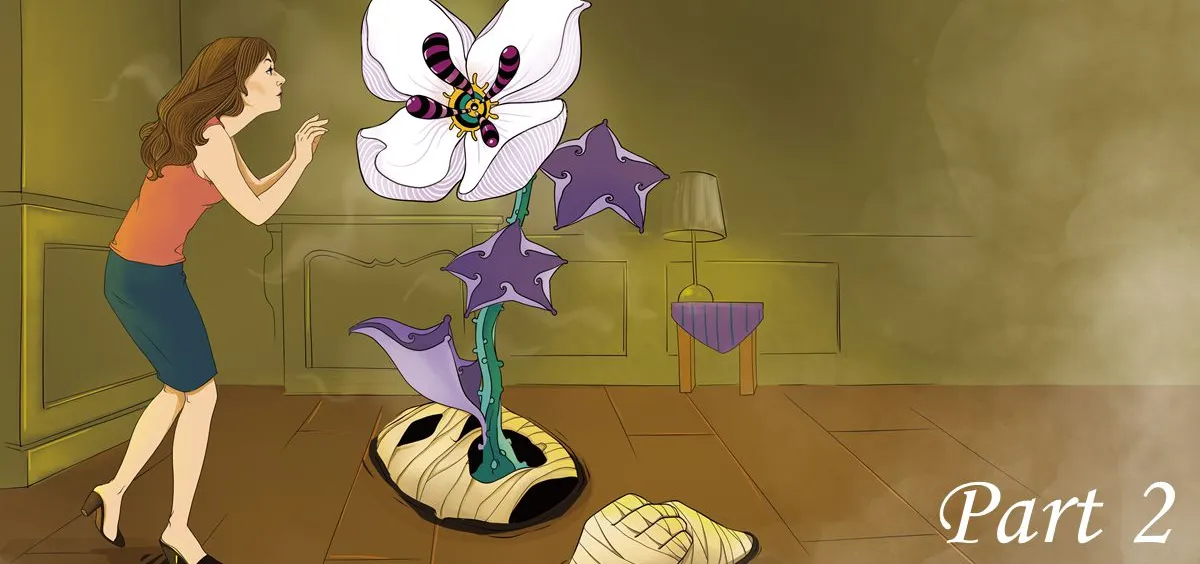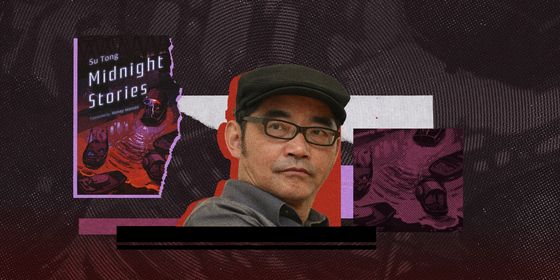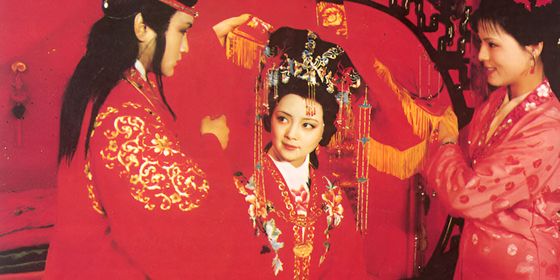Second part of the tale of mummies, mysterious plants, and obsession
Check out Part 1 first.
At home I spread prints of the photos out on my desk and started to research. I worked until the early hours of the morning, but found nothing. Was it an undiscovered species? I was doubtful, but a little part of me was starting to get excited.
I spent the next ten days searching, but there was a void of information. So I sent the photos to some specialists in the field. While I waited for their responses, a strange thing happened.
I was preparing material for an international biology conference in Paris and received another call from Francis.
“Gary,” he said, sounding panicked, “I need you to come back here, Alina’s sick.”
I was stunned, “From what? What did the doctor say?”
“There’s no clear diagnosis, the doctor’s never seen anything like this,” Francis paused, “but I think it’s the plant.”
“Has it changed in any way?”
“Not really, it looks exactly the same. But a few days ago it started to produce a strong scent. I had someone come test the air and they said it wasn’t toxic.”
“Then how can you be sure this is related to the plant?”
“Because I noticed that the flower turns, and I remembered something important. It’s got to be related to the plant. It would be best if you came over to help me work this out,” Francis said with a sigh.
“Alright, I’ll head over this afternoon,” I hung up. It was almost noon, but at least my presentation was nearly ready. I called my assistant, told him I needed to go out for the afternoon and explained what was left to prepare.
I didn’t want to keep poor Francis waiting. He and Alina were a close couple. Her strange illness must have been upsetting him. Instead of sitting down for lunch I stopped to pick up a burger for the road.
Just as I drove into their town, Francis called. He gave me the name of a restaurant and asked me to meet him there. He was already waiting at a table.
It wasn’t hard to find in that small town. The lunch rush was over and there were only a few customers inside. I saw Francis waving at me from by the window. He had lost a lot of weight in the ten days since I last saw him. His usually meticulously crafted hair was a mess and he hadn’t shaved in days.
“Thanks for coming Gary,” he said, forcing a smile.
“How’s Alina? Is she at home or in the hospital?”
“She’s at home. She’s obsessed with that plant. She won’t leave it for a second. There’s something very peculiar about it,” Francis knitted his eyebrows and laughed bitterly, “I should have uprooted it when I had the chance. If only I had known then…”
“What exactly is wrong with her?”
“I’m not sure. All her organs are functioning normally, but she’s losing a lot of weight.”
“You told me you thought there was a relationship between the plant and her illness. Can you explain further?” Francis’s face darkened and he let out a long sigh.
“Do you remember that expedition I told you I went on a few months ago?”
I thought for a minute and nodded, “You mean the new tomb that was discovered in Egypt.”
“Yes, organized by the Egyptians. Professor Nash has done extensive research on mummies and tombs, so he was invited. I had just finished a project and had some spare time, so I tagged along.
“But when we arrived we were told they had discovered a whole cluster of graves. These were different from tombs found in the Pyramids. These ones were built into a mountain of stone with a circumference of a few hundred meters. Myriad pathways and tunnels had been cut into the rock and crisscrossed like an intricate spider’s web. Signposts were installed to keep people from getting lost.
“The leader of the expedition told us that tombs had been discovered in a few places, but because the area was so large there were sections that needed further investigating. It was possible that more tombs were hiding behind the dark passageways.
“That excited Professor Nash. Discovering a tomb meant gaining access to a lot of primary data that would advance his research.
“The work started quickly. The Egyptians had already marked the previously discovered tombs and put up signs inside the tunnels. I am fascinated by graves built into mountains. But my work consists mainly of analyzing data and desk research. And none of my projects cover the topic either, so I rarely get the opportunity to visit this type of site.
“The organizers put up warning signs to stop people entering certain areas. But I knew Nash would ignore them and wasn’t surprised when he came to find me after he finished surveying the newly-opened tombs.
“Packing headlamps, rope, food, water and other gear we chose an entrance and walked inside. To ensure we could find our way back out we made marks on the tunnel walls with a fluorescent pen. But still, we got lost.
“The pen broke and we didn’t notice in time. Nash was finding clues and we were marking the wall randomly without checking to see if the fluorescent traces appeared. By the time we discovered the pen was broken we had no idea how far we’d gone.
“Our only choice then was to try to retrace our steps, but how could we be sure we weren’t walking deeper into the mountain? After about two hours we still couldn’t find a passage with fluorescent marks. We were both on the verge of collapsing. And that’s when we stumbled on a tomb.
“It was in excellent condition. As we had no way to get out, Nash started analyzing the tomb’s artifacts and I assisted to one side. We must have worked for over ten hours straight. Almost a day passed before we returned to reality. The food and water were running low. Luckily, the air inside was getting renewed.
“Nash managed to stay calm. He looked at his watch and said the team must have noticed we were missing by now. It was only a matter of time before they started searching the entrance we took. Our best option was to make it easy for them to find us.
“He soon had an idea. There was an air current where the passages crossed. If we burned our clothes, the smoke might get the rescue team’s attention.
“So we set fire to our clothes and other bits and pieces. Watching smoke trickledown into the winding passageways brought me a feeling of comfort. We burned everything we could, but there was no sign of a rescue party. Nash was starting to get anxious. But just before we completely broke down in fear, I remembered the mummy cloth——that would burn. I didn’t mention it. That cloth had such scientific value that I was worried Nash would berate me for even thinking of burning it.
“While I debated if I should say something, he had the same idea. We walked back to the tomb, opened the coffin, lifted out the mummy and dragged it back to the fire. As we pulled it along the ground a small ornate box fell out. I picked it up and dropped it in my pocket.
“I tried removing the cloth from the corpse, but it had hardened into a single clump. Nash was in such a panic he just set the whole mummy ablaze. It was wrapped from head to toe in all kinds of spices that smoldered and burned into thick clouds of smoke. God knows how long that mummy burned, but by the time the flames reached its feet someone had found us.”
Francis stopped there, picked up a glass of water, and gulped it down.
“What an incredible tale and you’re only telling me now?” I was mesmerized by his story. Even if it had nothing to do with me, I could still imagine how terrified he must have been.
“Professor Nash is well known, if a story like this were to get out…You know, he’s the one who keeps food on my table.
“But what does this have to do with that flower?” I was still puzzled.
“Let me finish. We returned from Egypt and Nash went on to study the artifacts we retrieved. There was nothing left for me to do. But when I unpacked my luggage I found the box that had fallen from the mummy. I’d forgotten to tell Nash about it.
Alina found it beautiful. Of course she had no idea it came from an ancient tomb. She opened it and found a few seeds inside. Right away, I told her to close it, telephoned Professor Nash and brought it to him.
I’m now wondering if that plant grew from one of those seeds. Alina had opened the box on the rug in the living room. My guess is that one of them fell out.”
“But what does that have to do with Alina’s illness?” I continued pressing.
“Haven’t you heard of the curse of the pharaohs?” Francis asked rhetorically.
“That stuff isn’t for real, is it?”
“You know, there are some things in archeology that just can’t be explained by science,” Francis sighed.
Seeing the depressed look on his face all I could do was comfort him. I wanted to go see Alina, but there was a problem at the lab so I got in my car and drove back.
Two days later, I had dealt with my affairs and was starting to receive replies to the email about the plant. Most said they couldn’t help. But an Australian friend provided some interesting information. He once saw an image of the flower at a site in South America. He assumed that it was sacred to a local tribe.
I was about to open an attachment in his email, but the phone rang. It was Francis. Just as I was about to tell him I’d found a clue, he said something that startled me.
“Professor Nash is dead.”
“What?” I stiffened.
“Nash planted the seeds from the box in his garden. His whole family is dead. Their symptoms were just like Alina’s. They got thinner and thinner until they were nothing but dry corpses like mummies.
“It can’t be possible?” This was unbelievable.
“The plant is evil, it absorbs human life. Before he died Nash had discovered its origins. It’s called a Corphid and originates from South America. It’s not clear how it arrived in Egypt. Somehow a local tribe got hold of the plant and started growing it widely. But for some reason the tribe vanished. I’m now wondering if it was the tribe that built the tombs Professor Nash and I visited.
It’s an extremely strong plant that can grow out of all kinds of substances. It can even take root in pig iron and could easily grow out of a floorboard. But that’s not the strangest part. The flower has some way of absorbing a human being’s vitality while addicting the victim to its scent. That’s why Alina’s getting so thin and won’t leave the flower’s side. It’s possible that this plant nearly exterminated that ancient tribe or forced them to relocate.”
“If that’s true, then why haven’t you been affected?”
“One flower can only consume one life. Alina’s weaker than me so the plant chose her.”
“Now what? Are you going to exterminate it?”
“I can’t, if I were to pull up the flower now, Alina would die with it. I have to wait for it to start wilting. At least we can spend her last hours together,” Francis said with a sob.
I didn’t know what to say.
“Do you remember when I told you about the curse of the pharaohs? This is the mummy’s revenge,” Francis hung up.
I put down the phone and opened the attachment. It was a strange picture: a blotched mural of people kneeling around a gigantic flower. They must have been terrified of its power. Who would have guessed that thousands of years later it would return?
Fortunately, one flower consumed one life and then withered and died. But nobody knew how it spread its seeds. If they propagated by wind it would surely be a catastrophe…As I pondered the situation, my assistant came in carrying a flowerpot.
Inside was the same plant that had grown in Francis’ living room.
“Return of the Corphid” is a story from our newest issue, “Family”, coming soon. To read the entire issue, become a subscriber and receive the full magazine. Alternatively, you can purchase the digital version from the iTunes Store.












